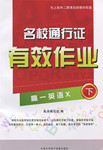题目内容
The snow storm left, a lot of damage to this area.
A. caused B. causing C. to cause D. to have caused
B

 名校通行证有效作业系列答案
名校通行证有效作业系列答案Much of the water we use comes from snow. Melting snow provides water for rivers, electric power centers and agricultural crops. In the western United States, mountain snow provides up to 75% of all surface water supplies.
Snowfall helps to protect plants and some wild animals from cold, winter weather. Fresh snow is made largely of air trapped among the snow crystals. Because the air has trouble moving, the movement of heat is greatly reduced.
Snow also is known to influence the movement of sound waves. When there is fresh snow on the ground, the surface of the snow takes in, or absorbs, sound waves. However, snow can become hard and flat as it becomes older or if there have been strong winds. Then the snow's surface will help to send back sound waves. Under these conditions, sounds may seem clearer and travel farther.
Generally, the color of snow and ice appears white. This is because the light we see from the sun is white. Most natural materials take in some sunlight. This gives them their color. However, when light travels from air to snow, some light is sent back, or reflected. Snow crystals have many surfaces to reflect sunlight. Yet the snow does take in a little sunlight. It is this light that gives snow its white appearance.
Sometimes, snow or ice may appear to be blue. The blue light is the product of a long travel path through the snow or ice. In simple terms, think of snow or ice as a filter. A filter is designed to reject some substances, while permitting others to pass through. In the case of snow, all the light makes it through if the snow is only a centimeter thick. If it is a meter or more thick, however, blue light often can be seen.
【小题1】How many functions of snow are discussed in the passage?
| A.One | B.Two | C.Three | D.Four |
| A.Because snow crystals contain heat. |
| B.Because snow crystals have air in them. |
| C.Because snow crystals are easy to blow away. |
| D.Because snow crystals send out heat when melting. |
| A.hard snow is better in protecting wild animals than fresh snow |
| B.fresh snow is better in sending sound waves than hard snow |
| C.fresh snow is better in taking in sound waves than hard snow |
| D.hard snow provides less water than fresh snow |
| A.send back none of the sunlight | B.send back all of the sunlight |
| C.take in most of the sunlight | D.take in some of the sunlight |